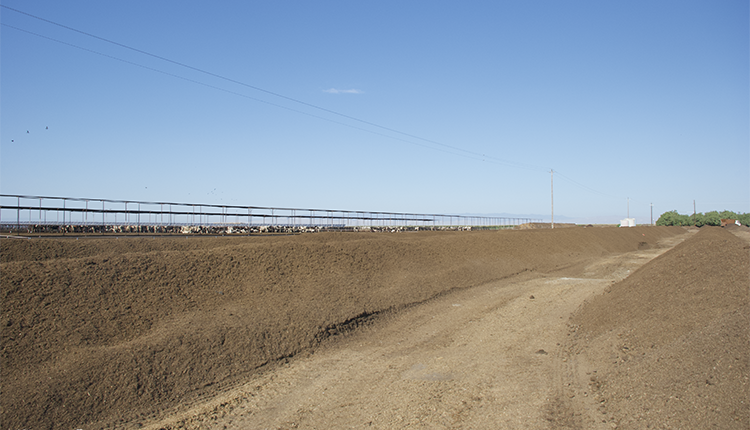
One major difference between a stack of manure and a compost pile is that the composting process takes place under controlled conditions. “That is the key distinction,” said field ag engineer Brian Dougherty during an Iowa State Extension “Dairy News and Views” podcast.
Dougherty defined composting as the biological decomposition of organic materials under controlled conditions. He shared five main parameters that are required for successful composting.
The first is moisture. Dougherty said 50% to 60% moisture is ideal. When the material falls below 40%, he said there isn’t enough moisture for the microbes to do their job. When the manure is more than 65% moisture, the pore space starts to fill with water and the pile has difficulty getting enough oxygen into it, which is needed for good composting.
The process also requires an appropriate carbon-to-nitrogen ratio. Dougherty recommended a range between a 20:1 and 30:1 carbon-to-nitrogen ratio. “If there is too much carbon and not enough nitrogen, it will slow down the decomposition process,” he explained. On the flip side, too much nitrogen can lead to ammonia volatilization and odor problems.
One way to manage this ratio is by matching the right seedstock material to the manure. For example, if manure is on the lower end of a carbon-to-nitrogen ratio, a farmer could mix in something like corn stover, which is higher in nitrogen, to up the ratio. “This takes a little bit of art, science, and trial and error,” Dougherty said.
The third parameter is oxygen. “Oxygen is incredibly important to the process,” Dougherty noted. There is not a practical on-farm way to test the amount of oxygen in a pile, but Dougherty said that properly designed and spaced windrows and the right particle size can help with oxygen levels.
As for particle size, Dougherty said a pile should have a good blend of particle sizes to help oxygen transport through the windrow. Small particles will break down faster, while large ones degrade slower. He recommended a blend of particles between 1/8 inch to 2 inches in diameter.
Finally, Dougherty said temperature is a critical component of successful composting. “If you don’t hit the temperature range of 110°F to 160°F, you are not going to have good composting happening,” he shared. The “sweet spot” is 130°F to 150°F. Over 160°F, the microbes are not able to survive. Below 110°F, the decomposition process will be very slow.
Once again, the five parameters are moisture, carbon to nitrogen ratio, oxygen, particle size, and temperature. “If you can manage those five things, you can successfully compost,” Dougherty stated.
The benefit of successful composting is that it creates a more valuable end product. Manure that is properly composted is very biologically friendly to soil, helps increase organic matter, improves water holding capacity, and reduces bulk density.
“If you can make good compost, it is an excellent soil amendment,” he concluded.








